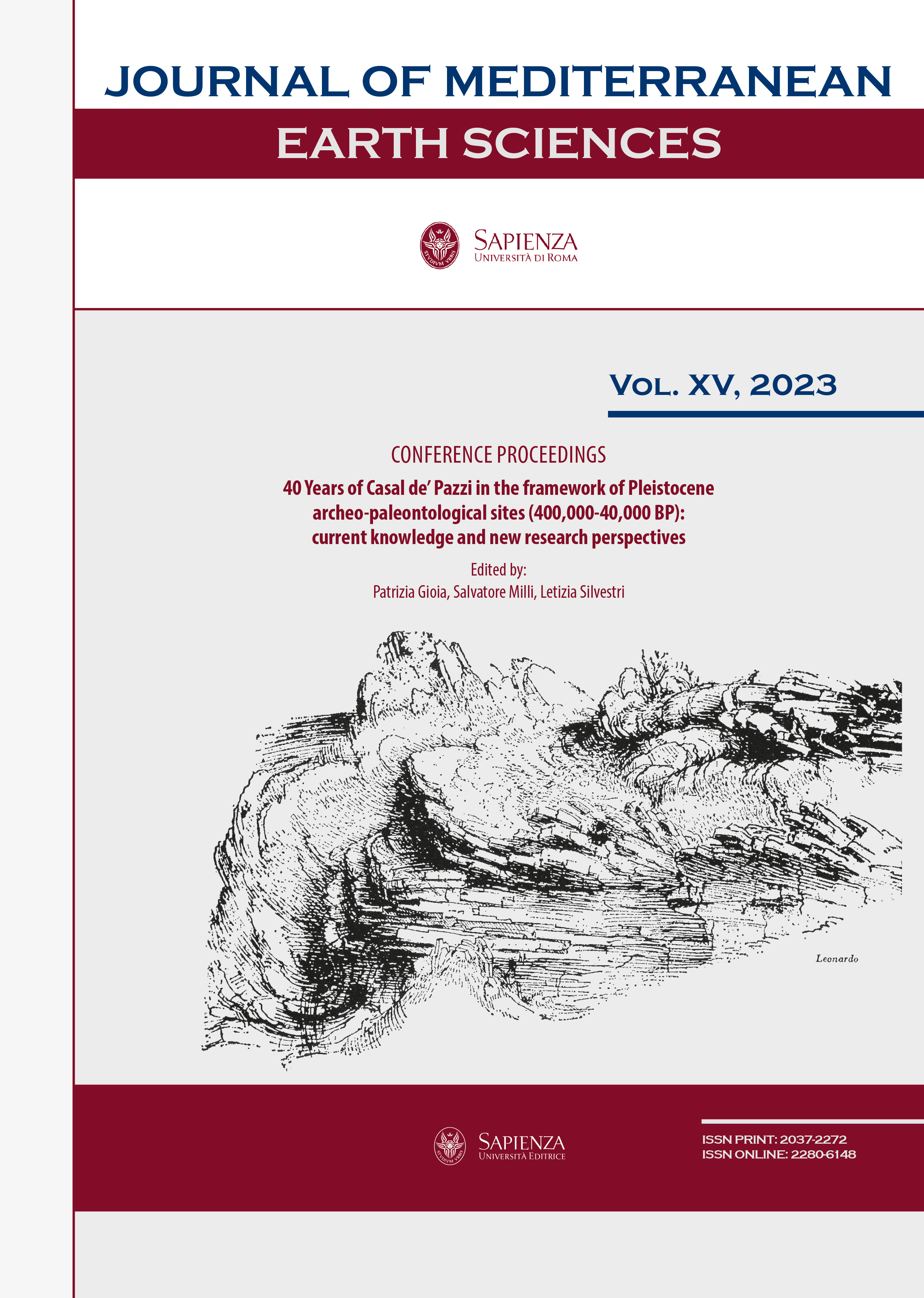The subsoil of the Colosseum and the detection of the ancient Tiber river Paleovalley (MIS 12-11) in Rome
DOI:
https://doi.org/10.13133/2280-6148/18067Abstract
Core data from five boreholes drilled in 2017 in the Colosseum hypogea are of great interest for defining the Middle Pleistocene fluvial paleogeography and paleoenvironment in the Roman Basin. A detailed facies analysis and lithostratigraphic correlation with numerous other core and outcrop data from nearby areas, including the Palatine, Roman Forum, and Capitoline Hill, were performed in order to precisely reconstruct the subsoil of the monument and of the wider archaeological area.
Two well-defined paleovalley infills have been identified, whose formation was linked to sea-level changes correlated to MIS 12-11 and MIS 5d-1 and associated with the ancient Tiber River and the recent Fosso Labicano stream, respectively.
The Middle Pleistocene paleovalley stretches in the N-S direction, reaching a width of up to 500 m. It was extensively carved during MIS 12 into older volcano-sedimentary interfluves (MIS 16-13) and the Pliocene substratum. The valley infill is 40 m thick and corresponds to the Fosso del Torrino formation, deposited during the MIS 12-11 transition. This formation comprises basal gravels that grade upward to cross-bedded channelized sandstone, which contains remains of vertebrates such as Palaeoloxodon antiquus and Bos primigenius. Additionally, the formation includes floodplain clays and silt with interbedded lignite seams and tephra. The western side of the Colosseum is founded on pebbles and sands of an eastward-directed concave side of the paleovalley, while floodplain and marshy deposits are found further west beneath the Palatine hill, on the convex bank of the ancient river.
The paleovalley trunk of the historical centre of Rome correlates well with the downstream fluvial sandstones cropping out at the fossiliferous site of Via Ostiense in the Colli di San Paolo area, where lateral input from an ancient left bank tributary is inferred.
Downloads
Published
How to Cite
License
The submission has not been previously published, nor is it before another journal for consideration (or an explanation has been provided in Comments to the Editor).


